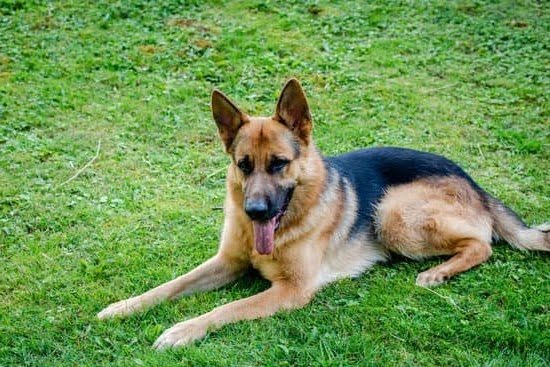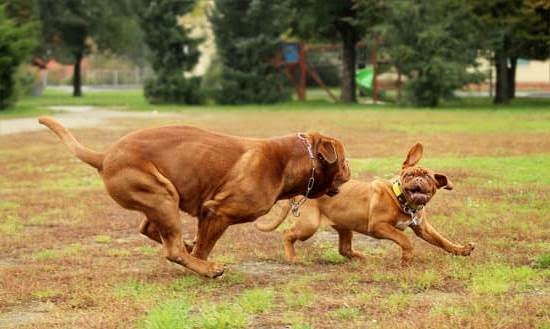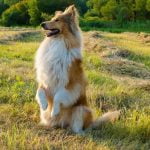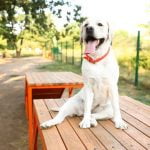Introduction
Training your dog not to eat cat food is beneficial not just for the safety and well-being of your feline companion, but also for that of your canine friend. Eating cat food can lead to an upset stomach, obesity, nutritional deficiencies, or even irreversible organ damage in dogs. In order to ensure that both your pets remain healthy, it’s important to train them so there is no confusion when it comes to mealtimes. Some helpful tips include:
Detailing the Health Risks of Feeding Dogs Cat Food
Feeding your dog cat food has many associated health risks which you should be aware of. Due to the fact that cats and dogs have different dietary needs, feeding your dog cat food can result in deficiencies in nutrients, vitamins and minerals that could potentially cause long-term health issues. For example, since cats require higher levels of protein than dogs do, feeding a dog cat food that is too high in protein can cause liver damage or pancreatitis. Also, cats require higher amounts of taurine than dogs do; lack of taurine can lead to vision impairment or heart disease. Additionally, cat food generally contains more calories and less fiber than dog food; if your dog eats too much cat food without getting enough balanced exercise they may become obese with its associated health risks. Moreover, certain types of cat foods may contain ingredients that are toxic to dogs such as onions or garlic powder; if consumed even in small amounts it could result in anemia or other digestive issues.
Establishing Rules and Creating Preventative Measures
Training your dog not to eat cat food starts with establishing rules. Every time you catch your dog snacking on cat food, follow standard training techniques – sternly say “no” while making immediate eye contact and redirecting your dog to a preferred chew toy or activity. This will help reinforce that it is off-limits and teach them what behaviors are acceptable and appropriate. Keeping the cat food out of reach at all times and in an area that is inaccessible to your dog is another great preventative measure. If this isn’t possible, consider purchasing a container with an airtight lid so it can’t be accessed by prying paws and curious noses. In some cases, setting up baby gates may also be a viable alternative for keeping dogs away from designated spaces in your home. Ultimately, providing positive reinforcement when good behaviors are demonstrated and consistent discipline characterized by kind but firm instruction are key elements of successful training. With consistency and patience, soon enough you can rest easy knowing that the only canine eating kitty chow is the one confined to a special cartoon universe!
Providing an Effective Way to Deny Access
One of the best ways to ensure your dog doesn’t eat cat food is to limit their access. This means keeping all cat food stored in an area that your dog can’t access, such as a closed cabinet or pantry with a childproof lock. If you don’t have this type of storage space, try raising the bowls to above ground level and putting items on the counter that make it difficult for your dog to reach them. Additionally, you can use gates or baby doors to block off certain parts of the house from areas where the cat food is kept.
Furthermore, you should also take into consideration other temptations that may be available; things like bagged pet food, table scraps and leftovers should be secured away in order to eliminate any easy-access options for your dog. Make sure not to leave food out unattended after meals while house training your four-legged friend as they could identify it as their own meal time and become used to leaning around waiting for dishes of their own after eating theirs. To reduce confusion and make sure everybody gets their own servings of nourishment; set specific times throughout the day when every pet eats in separate locations at once. This way both cats and dogs get an exclusive experience free of competition over resources like human food or one another’s treats!
Building Positive Behaviors
Training your dog to not eat cat food is an important part of maintaining a healthy environment in the home. It’s also important for pet safety, as the dog may ingest something that could make them ill if they consume cat food meant for cats. Building positive behaviors that prevent a dog from eating another pet’s food is essential and there are several techniques to follow when training your pup not to indulge in the feline feast.
Start by determining what treats and rewards your dog finds most desirable. This could be a special toy, a tasty treat like chicken jerky or even extra cuddles. With whatever was decided as a reward, praise your dog every time it walks away from any cat food present in the home while giving them their reward item. Whenever you spot the dog sniffing around cat food but turning away — verbalize that they did a good job by saying “good boy/girl” loudly and offer them their reward item to reinforce the behavior.
In addition to this rewarding system, you can create visual deterrents like taping plastic wrap over where the cat food is kept or spread citrus scented deterring molecules like D-limonene around areas where kitty eats or sleeps to distract Fido from approaching too closely. Over time, with consistent reinforcement, your pup should know better than to indulge in any forbidden foods found within your home!
Using Positive Reinforcement
Positive reinforcement is a great tool for training your dog not to eat from the cat’s food dish. To begin, start by beginning by bringing plenty of toys and treats to the area surrounding your pet’s food bowls. When you catch your dog about to grab a bite from the cat’s food bowl, say “No” or “Stop” in a firm voice. You can then direct his attention back to one of his own toys while offering him a delicious treat and praising him with kind words. This teaches him that good behavior equals a reward.
You should also use other techniques, such as body language and blocking access, to further discourage the behavior. If you notice your dog going near the cat’s food bowl again, stand up and sternly clap your hands so he knows not to expect anything positive if he goes there again. Move closer to him and put yourself between him and the cat’s food dish, while keeping an eye on the situation so you can intervene if necessary. Additionally, try feeding both pets at separate times or feed them together using puzzle feeders or games that will keep them distracted from each other’s meals until they are finished eating their own portion.
Ensuring the Proper Diet
When it comes to ensuring that your dog doesn’t eat cat food, first and foremost the best way to do this is to help make sure that both your pets are getting the proper nutrition. The difference in diets between dogs and cats needs to be taken into account when feeding both of them; cats require a higher protein diet than dogs do, and as such their food typically has more fats, proteins, and carbohydrates than what would be suitable for a dog. Making sure that your dog is receiving all of the essential nutrients in its own diet will help decrease its hunger for the cat’s food. If the dog may need some extra calories or better metabolism management due to an underlying health issue, then speak with your veterinarian about special diets that may help provide your pup with the nutrients it needs while still keeping it away from whatever it’s not supposed to eat.
In addition to providing proper nutrition for both pets, limiting access can also be an effective way to prevent accidental consumption. This could take the form of separating bowls, keeping kitty’s food inaccessible behind a closed door or gate, or even setting up a dog-proof dining area for your feline friend. Whatever method you choose for implementation should let us pet know that each one has their own respective places when it comes to meals — not just yours!
Looking Into Professional Assistance
When it comes to training your dog not to eat cat food, it can be a difficult task depending on the age and personality of your dog. If you’re having difficulty reaching success with your training methods, considering professional assistance may be the best option. Dog trainers specialize in understanding canine behavior and they may have better techniques than what you have been already trying at home.
Professional trainers can provide one-on-one guidance and support for more intractable issues, such as teaching a dog not to eat cat food. Through their experience working with a wide variety of dog breeds, sizes and temperaments, professional trainers often bring creative strategies to solving the behavioral problems you’re facing.
Most trainers use positive reinforcement during their sessions – rewarding healthy behaviors rather than punishing bad behaviors – which reinforces desired habits and keeps your dog safe and anxiety-free during its learning process. Make sure to do research ahead of time to ensure that the trainer/dog facility you choose is reputable as many inexperienced or untrained individuals can cause more harm than good while trying to train your pet. Good luck!
Conclusion
To ensure that your dog is not getting into any cat food, it is essential to take the necessary steps to train them properly and understand their behavior. To start, identify any triggers that lead to your dog wanting to eat cat food such as smell, availability of food bowls, or other encouragement from people or pets in the house.Create a plan using positive reinforcement techniques and clear commands to discourage access or consumption of cat food. Clear communication and consistency are key components for successful training. During this time, be sure to remove any access your dog may have to cat food. Additionally, be sure to praise your dog when they demonstrate desired behaviors such as leaving the cat food bowl alone.
Overall, with consistent patience and rewards, you can successfully teach your pup not to eat cat food based on these easy-to-follow steps. By being proactive about keeping an eye on both pets in the household and continuing the training methods outlined above, you will create a safe environment for both cats and dogs in the home while continuing to build trust between pet and owner.

Welcome to the blog! I am a professional dog trainer and have been working with dogs for many years. In this blog, I will be discussing various topics related to dog training, including tips, tricks, and advice. I hope you find this information helpful and informative. Thanks for reading!





